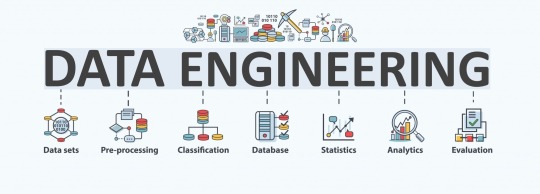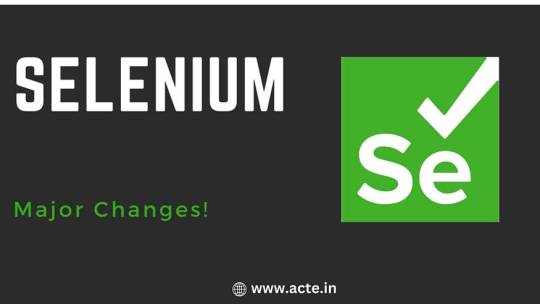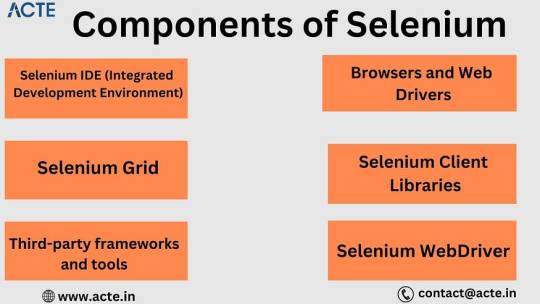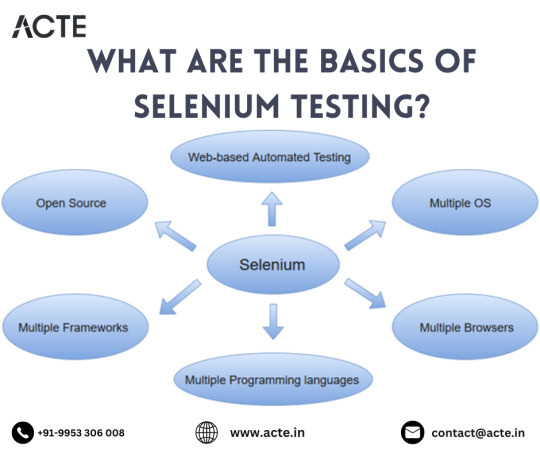#java script data types
Explore tagged Tumblr posts
Text

TECHNOLOGY ID PACK

NAMES︰ admin. ajax. alexa. am. atari. audio. auto. bailey. binary. blank. blu. blue. bluesse. browser. browsette. bug. byte. cache. calware. chip. circe. click. clicker. clickie. clicky. cloud. coda. code. codette. codie. cody. computette. crypt. cursor. cy. cyber. cybernet. cybernetica. cyberweb. cypher. cypherre. data. dell. digi. digitalia. digitelle. digitesse. disc. dot. electronica. electronique. emoticon. emoticonnie. fax. file. gig. gizmo. glitch. glitche. glitchesse. glitchette. graphique. hacker. hal. halware. hijack. index. informationne. intelligette. internette. interweb. java. javascript. juno. key. link. linuxe. lotus. lovebytes. mac. mal. malakai. malware. malwaria. memorette. memorie. meta. mic. micah. mickey. morphe. mouse. mousette. myspace. nano. neo. net. netette. nett. netty. paige. pascal. payton. peyton. pixel. programatha. programette. programme. pulse. reboot. rom. router. ruby. sam. sammy. screene. screenette. sean. shock. solitaire. spy. static. stutter. talia. tap. tecca. tech. techette. tessa. tetris. trojan. troubleshoot. ts. user. vir. virus. virusse. volt. vyrus. webbe. wheatley. whirr. widget. will. wirehead. wiresse. zap. zett. zetta. zip.

PRONOUNS︰ ai/ai. alt/alt. anti/antivirus. arc/archive. audio/audio. bat/battery. beep/beep. beep/boop. bit/bit. bit/byte. blue/blue. board/board. bright/bright. brow/browser. browser/browser. brr/brr. bu/bug. bug/bug. buzz/buzz. byt/byte. byte/byte. c/cpu. charge/charger. cir/circuit. cli/click. click/clack. click/click. click/scroll. co/code. code/code. color/color. com/com. com/computer. comp/computer. compute/computer. computer/computer. cor/corrupt. corrupt/corrupt. CPU/CPU. crash/crash. cre/creeper. crtl/crtl. cy/cyber. cyb/cyber. cyber/cyber. da/data. data/data. delete/delete. di/disk. dig/digital. digi/digi. digi/digital. digital/digital. dra/drag. e/exe. electronic/electronic. enter/enter. er/error. err/error. error/error. exe/exe. fi/file. file/file. gi/gif. gli/glitch. glit/glitch. glitch/glitch. graphic/graphic. hac/hacker. hack/hack. hard/hardware. head/phone. hij/hijacker. ho/home. info/info. information/information. int/internet. intelligent/intelligence. intelligent/intelligent. inter/net. internet/internet. it/it. jpg/jpg. key/board. key/cap. key/key. key/keyboard. key/keylogger. lag/lag. lap/laptop. ligh/light. linux/linux. load/load. log/login. main/mainframe. mal/malware. me/media. memory/memorie. mon/monitor. mou/mouse. nano/nano. net/net. net/network. org/org. over/overwrite. page/page. pix/pix. pix/pixel. pixel/pixel. plu/plug. png/png. pop/popup. port/port. pow/power. pro/program. program/program. ram/ram. ran/ransom. reboot/reboot. reload/reload. res/restore. ret/retro. route/router. sca/scan. scr/scroll. scre/screen. scre/screencap. scree/screen. screen/screen. scri/script. script/script. sentient/sentience. shift/shift. site/site. skip/skip. soft/software. spa/spam. space/space. spy/spyware. stop/stop. te/tech. tech/nology. tech/tech. technology/technology. tou/touchpad. txt/txt. typ/type. upload/upload. user/user. vi/viru. vi/virus. vir/virtual. web/page. web/web. whir/whir. wi/wire. win/dow. win/window. wire/wire. wire/wired. zip/zip . ⌨ . ☣ . ⚙ . ⚠ . 🎞 . 🎨 . 🎭 . 🎮 . 🎵 . 👀 . 👁 . 💔 . 💡 . 💢 . 💣 . 💳 . 💵 . 💻 . 💽 . 💾 . 💿 . 📀 . 📱 . 🔇 . 🔈 . 🔉 . 🔊 . 🔋 . 🔌 . 🔎 . 🖥 . 🖱 . 🗡 . 🗯 . 🛠 . 🧿 .

#pupsmail︰id packs#id pack#npt#name suggestions#name ideas#name list#pronoun suggestions#pronoun ideas#pronoun list#neopronouns#nounself#emojiself#techkin#robotkin#internetkin
453 notes
·
View notes
Text


I tried to make something since Animation vs Coding came out. (I don't care about misspelling.)
This is a joke with no punch line because, while it is certainly in-character to these 2 terrorists, it is not a joke I am committed to make. I hope you don't even know what codes they are reacting to.
So, now the punchline is... Everything is so bad from the ground-up, The Dark Lord doesn't know where to start? And The Chosen One somehow ended up insulting ONE normal thing, enraging TDL? Good enough.
I thought about deleting the entire thing, but it was such a perfect way to showcase that me, the author, can "play" a character who much more knowledgeable than I am, because I don't code.
(I don't code beyond getting a bad grade in basic Java and superficially studied C, C++ and C# just to make my resume more attractive. I got my job, I don't care.)
I didn't even know what is an "Enum" before making this comic. Do your research and cherry-pick correct information, and you can fool the average audiences before an actual expert shows up.
One quirk I gave to TCO and TDL (most likely the rest of digital creatures), is that they influenced by the code they speak out loud. TCO has randomized capital letter throughout their speech, but say "Floor" the exact way it appears in code, twice, because string data is case-sensitive. They have free will and can choose not to execute friend certain scripts or simply refuses to say it out loud.
After this, TDL is putting TCO in CODE dot ORG jail. A very great place to start learning, by the way. (Unlike Brilliant, it's free.)
I am explaining things under the cut
You watched AvC, so you already know what is constant and variable... but still;
Gravitational acceleration is a constant.
Speed is a variable.
In your program, you would want some value to change, some to stay the same.
Enum is a type of class.
Class is a collection of data that can either be variables or constant, they can be different data type. Class is good for creating character profile, such as containing both Name (String) and age (Integer).
Enum, is a type of class that only contain constant. If class is a character profile, then, Enum is a lore book that contain things that need to be reference, unchanged, throughout the program. In this comic, Enum is used for items. Unless an upgrade system is involved, items should have the same property.
Me, personally, would simply put name strings in Enum, but actual coding is flexible to make it less of a nightmare to come back and fix, so, as The Dark Lord says, not ideal, but fine.
Not code, PU = Processing Unit, used interchangeably with brain. TDK specifically says that because it sounds like, "Poo".
#animator vs animation#animation vs coding#animation vs education#ava the dark lord#ava the chosen one#sketch#ava/m#avc#ave#ava comic
45 notes
·
View notes
Text
the three types of programmer job posting in 2025:
we need someone with strong problem solving skills and a knowledge of C/C++ Python and Java who enjoy challenging. experience with bash scripts a plus
we need a CI/CD Spring Boot Agile DevOps test engineer with Jira fast-paced weekends start immediately 5 years experience required no degree
we need a react/node.js html/css c# typescript webdev who also knows python oh god why does no one in webdev understand basic data structures
7 notes
·
View notes
Text
November 15th Journal Song of the day - Illicit Affairs (Taylor Swift)

It's been getting too cold to go out and work/study, so I've been making a cozier home office space. It wasn't too bad yesterday, so I went downtown and did anything I could there. Work has been unbelievably busy, to the point where I'm working at 1 AM despite having a 9-5. I wanted to feel needed at work- I got what I wanted and here we are now. I haven't been able to even attempt any extra studying, but things should slow down for a bit so I'm back at it. To-do: Habit 1: Studying 🦉Plan how to re-create my current portfolio 🦉Data Analysis Assignment Unit 3 🦉Data Analysis 5.1 🦉Type out more handwritten notes 🦉Python Coursera Final Project 🦉Python CS50 Lect 1 Projects Habit 2: Self-care 🕯️30-minute home workout 🕯️A bottle of water 🕯️Scrapbook a page Habit 4: Reading 📰100 pages of the 5 AM Club (Robin Sharma) 📰Ch 1 of Java script book Habit 5: Language Learning 🏛️Italian level 1
#studyblr#studyspo#study motivation#daily journal#to do list#light academia#study blog#coding#dark academia#langauge learning#workblr#langblr#it girl self care#becoming that girl#journaling#journal
14 notes
·
View notes
Text
Best IT Courses In Bhubaneswar:- seeree services pvt ltd.
Introduction:- seeree is one of the best IT training institute and Software industry, features completely Industrial training on Python , PHP , .NET , C Programming,Java , IOT , AI , GD PI , ORACLE and ALL CERTIFICATION COURSES as well as provides seminar,cultural activity and jobs
Courses we provided:- 1) Java Fullstack 2) Python Fullstack 3) PHP Fullstack 4) Preplacement Training & Sp. Eng 5) .NET Fulstack 6) SEO/Digital Marketing 7) SAP 8) MERN 9) Software Testing 10)Data Analyst 11)Data Science 12)Data Engineering 13)PGDCA 14)Tally 15)Graphics Design
Course1:- Java Fullstack

A Class in Java is where we teach objects how to behave. Education at seeree means way to success. The way of teaching by corporate trainers will bloom your career. We have the best java training classes in Bhubaneswar. 100% Placement Support. Job Support Post Training. This course will give you a firm foundation in Java, commonly used programming language. Java technology is wide used currently. Java is a programming language and it is a platform. Hardware or software environment in which a program runs, known as a platform. Since Java has its own Runtime Environment (JRE) and API, it is called platform. Java programming language is designed to meet the challenges of application development in the context of heterogeneous, network-wide distributed environment. Java is an object-oriented programming (OOP) language that uses many common elements from other OOP languages, such as C++. Java is a complete platform for software development. Java is suitable for enterprise large scale applications.]
Course2:- Python Fullstack

Seeree offers best python course in Bhubaneswar with 100% job assurance and low fee. Learn from real time corporate trainers and experienced faculties. Groom your personality with our faculty. Seeree helps to build confidence in students to give exposure to their skills to the company.
Python is dynamically typed , compiled and interpreted , procedural and object oriented , generalized , general-purpose , platform independent programming language. Python is a high-level, structured, open-source programming language that can be used for a wide variety of programming tasks.
Course3:- PHP Fullstack

seeree is the best training institute which provide PHP Training courses in bhubaneswar and all over odisha We aim the students to learn and grow altogether with the need of IT firms.
PHP is a server scripting language, and a powerful tool for making dynamic and interactive Web pages. PHP is a widely-used, free, and efficient alternative to competitors such as Microsoft's ASP.
Course4:- Preplacement Training & Sp. Eng

Welcome to SEEREE Institute, where excellence meets opportunity. At SEEREE, we are dedicated to providing a transformative learning experience that empowers students to achieve their goals and contribute to a brighter future.
Our institute offers cutting-edge courses designed to meet the needs of the ever-evolving global landscape. With a team of highly qualified instructors and state-of-the-art facilities, we ensure a supportive and inspiring environment for learning and growth.
Whether you're here to develop new skills, explore innovative fields, or pursue personal and professional success, SEEREE Institute is the perfect place to begin your journey. Thank you for choosing us, and we look forward to being a part of your success story.
Course5:- .NET Fullstack

Seeree offers best .NET course in Bhubaneswar with 100% job assurance and low fee. Learn from real time corporate trainers and experienced faculties. Groom your personality with our faculty. Seeree helps to build confidence in students to give exposure to their skills to the company.
Course6:- SEO/Digital Marketing

In today's fast-paced digital world, businesses thrive on visibility, engagement, and strategic online presence. At SEEREE, we empower you with the skills and knowledge to master the art of Search Engine Optimization (SEO) and Digital Marketing.
Our comprehensive program is designed for beginners and professionals alike, covering everything from keyword research, on-page and off-page SEO, and content marketing, to social media strategies, PPC campaigns, and analytics.
With hands-on training, real-world projects, and guidance from industry experts, we ensure you're equipped to drive measurable results and excel in this dynamic field.
Join us at SEEREE Institute and take the first step towards becoming a leader in the digital marketing landscape!"
Course7:- SAP

SAP refers to Systems, Applications, and Products in Data Processing. Some of the most common subjects covered in these courses include human resource software administration, database management, and business training. Obtaining SAP certification can be done on a stand-alone basis or as part of a degree program.
Course8:- MERN

Seeree offers the best MERN course in Bhubaneswar with 100% job assurance and low fees. Learn from real-time corporate trainers and experienced faculty. Seeree helps students build confidence and gain skills to excel in company roles.
Are you ready to step into the exciting world of web development? At SEEREE, we bring you a comprehensive MERN Stack course that equips you with the skills to build modern, dynamic, and responsive web applications from start to finish.
The MERN Stack—comprising MongoDB, Express.js, React.js, and Node.js—is one of the most sought-after technologies in the web development industry. Our program is designed to help you master each component of the stack, from creating robust backends and managing databases to crafting dynamic frontends and seamless APIs.
Course9:- Software Testing

Seeree offers best Testing course in Bhubaneswar with 100% job assurance and low fee. Learn from real time corporate trainers and experienced faculties. Groom your personality with our faculty. Seeree helps to build confidence in students to give exposure to their skills to the company.
In the fast-paced world of software development, ensuring the quality and reliability of applications is crucial. At SEEREE, we offer a comprehensive Software Testing course designed to equip you with the skills and techniques needed to excel in this essential field.
Our program covers all aspects of software testing, from manual testing fundamentals to advanced automation tools and frameworks like Selenium, JIRA, and TestNG. You’ll learn to identify bugs, write test cases, execute test scripts, and ensure software meets high-quality standards.
With hands-on training, real-world scenarios, and guidance from experienced industry professionals, you’ll be prepared to take on roles like Quality Assurance Engineer, Test Analyst, and Automation Tester.
Join SEEREE Institute and gain the expertise to become a key player in delivering flawless software solutions. Your journey to a rewarding career in software testing starts here!"
Course10:- Data Analyst

Seeree offers the best Data Analyst course in Bhubaneswar with 100% job assurance and affordable fees. Our comprehensive curriculum is designed to cover all aspects of data analysis, from data collection and cleaning to advanced data visualization techniques. Learn from real-time corporate trainers and experienced faculty members who bring industry insights into the classroom. Enhance your analytical skills and boost your career prospects with hands-on projects and real-world case studies. Our faculty also focuses on grooming your personality and soft skills, ensuring you are well-prepared for interviews and workplace environments. Seeree is dedicated to building confidence in students, providing them with the necessary exposure to showcase their skills to top companies in the industry.
Course11:- Data Science

Seeree offers the best Data Science course in Bhubaneswar with 100% job assurance and affordable fees. Our comprehensive curriculum is designed to cover all aspects of data science, from data collection and cleaning to advanced data visualization techniques. Learn from real-time corporate trainers and experienced faculty members who bring industry insights into the classroom. Enhance your analytical skills and boost your career prospects with hands-on projects and real-world case studies. Our faculty also focuses on grooming your personality and soft skills, ensuring you are well-prepared for interviews and workplace environments. Seeree is dedicated to building confidence in students, providing them with the necessary exposure to showcase their skills to top companies in the industry.
Course12:- Data Engineering

In the era of big data, the ability to design, build, and manage scalable data infrastructure is one of the most in-demand skills in the tech industry. At SEEREE, we are proud to offer a comprehensive Data Engineering course that prepares you for a career at the forefront of data-driven innovation.
Our program covers essential topics such as data modeling, ETL processes, data warehousing, cloud platforms, and tools like Apache Spark, Kafka, and Hadoop. You’ll learn how to collect, organize, and transform raw data into actionable insights, enabling businesses to make smarter decisions.
With real-world projects, expert mentorship, and hands-on experience with the latest technologies, we ensure that you are industry-ready. Whether you’re starting fresh or upskilling, this program will empower you to unlock opportunities in the rapidly growing field of data engineering.
Join SEEREE Institute and take the first step toward building the data pipelines that power tomorrow’s technology!"
Course13:- PGDCA

Seeree offers the best MERN course in Bhubaneswar with 100% job assurance and low fees. Learn from real-time corporate trainers and experienced faculty. Seeree helps students build confidence and gain skills to excel in company roles.
In today’s digital age, computer applications are at the heart of every industry, driving innovation and efficiency. At SEEREE Institute, our Post Graduate Diploma in Computer Applications (PGDCA) program is designed to provide you with in-depth knowledge and hands-on skills to excel in the IT world.
This program offers a comprehensive curriculum covering programming languages, database management, web development, software engineering, networking, and more. Whether you aim to enhance your technical expertise or step into a rewarding career in IT, PGDCA at SEEREE equips you with the tools to succeed.
With expert faculty, state-of-the-art labs, and real-world projects, we ensure that you gain practical experience and a strong theoretical foundation. By the end of the program, you’ll be prepared for roles such as software developer, system analyst, IT manager, or database administrator.
Course14:- Tally

Seeree offers the best Tally course in Bhubaneswar with 100% job assurance and low fees. Learn from real-time corporate trainers and experienced faculty. Seeree helps students build confidence and gain skills to excel in company roles.
In today’s business world, efficient financial management is key to success, and Tally is one of the most trusted tools for accounting and financial operations. At SEEREE Institute, we offer a comprehensive Tally course designed to equip you with the skills needed to manage business finances effortlessly.
Our program covers everything from the basics of accounting and bookkeeping to advanced features like GST compliance, inventory management, payroll processing, and generating financial reports. With hands-on training and real-world applications, you’ll gain practical expertise in using Tally effectively for businesses of any scale.
Whether you're a student, a professional, or a business owner, our Tally program is tailored to meet your needs and enhance your career prospects in the fields of accounting and finance.
Course15:- Graphics Design

In the world of creativity and communication, graphic design plays a vital role in bringing ideas to life. At SEEREE Institute, our Graphic Design course is tailored to help you unlock your creative potential and master the art of visual storytelling.
Our program covers a wide range of topics, including design principles, color theory, typography, branding, and user interface design. You’ll gain hands-on experience with industry-standard tools like Adobe Photoshop, Illustrator, and InDesign, enabling you to create stunning visuals for print, digital media, and beyond.
Whether you're an aspiring designer or a professional looking to sharpen your skills, our expert trainers and real-world projects will provide you with the knowledge and confidence to excel in this competitive field.
Join SEEREE Institute and start your journey toward becoming a skilled graphic designer. Let’s design your future together!"
2 notes
·
View notes
Text
Computer Language
Computer languages, also known as programming languages, are formal languages used to communicate instructions to a computer. These instructions are written in a syntax that computers can understand and execute. There are numerous programming languages, each with its own syntax, semantics, and purpose. Here are some of the main types of programming languages:
1.Low-Level Languages:
Machine Language: This is the lowest level of programming language, consisting of binary code (0s and 1s) that directly corresponds to instructions executed by the computer's hardware. It is specific to the computer's architecture.
Assembly Language: Assembly language uses mnemonic codes to represent machine instructions. It is a human-readable form of machine language and closely tied to the computer's hardware architecture
2.High-Level Languages:
Procedural Languages: Procedural languages, such as C, Pascal, and BASIC, focus on defining sequences of steps or procedures to perform tasks. They use constructs like loops, conditionals, and subroutines.
Object-Oriented Languages: Object-oriented languages, like Java, C++, and Python, organize code around objects, which are instances of classes containing data and methods. They emphasize concepts like encapsulation, inheritance, and polymorphism.
Functional Languages: Functional languages, such as Haskell, Lisp, and Erlang, treat computation as the evaluation of mathematical functions. They emphasize immutable data and higher-order functions.
Scripting Languages: Scripting languages, like JavaScript, PHP, and Ruby, are designed for automating tasks, building web applications, and gluing together different software components. They typically have dynamic typing and are interpreted rather than compiled.
Domain-Specific Languages (DSLs): DSLs are specialized languages tailored to a specific domain or problem space. Examples include SQL for database querying, HTML/CSS for web development, and MATLAB for numerical computation.
3.Other Types:
Markup Languages: Markup languages, such as HTML, XML, and Markdown, are used to annotate text with formatting instructions. They are not programming languages in the traditional sense but are essential for structuring and presenting data.
Query Languages: Query languages, like SQL (Structured Query Language), are used to interact with databases by retrieving, manipulating, and managing data.
Constraint Programming Languages: Constraint programming languages, such as Prolog, focus on specifying constraints and relationships among variables to solve combinatorial optimization problems.
2 notes
·
View notes
Text
Deciding Between Selenium with Python and Selenium with Java: An In-Depth Comparison
In the domain of automated testing, Selenium emerges as a pivotal tool for ensuring the reliability and quality of web applications. When it comes to selecting the programming language to harness Selenium's capabilities, two prominent contenders often come into play: Python and Java. Both languages offer distinct advantages and considerations, making the decision between them crucial for any automation project.

In this blog post, we'll conduct a thorough comparison of Selenium with Python and Selenium with Java, exploring their unique strengths, use cases, and factors to consider. By the end, readers will have a clearer understanding of which option aligns best with their project requirements, team proficiencies, and organizational objectives.
Python with Selenium:
Python, celebrated for its simplicity and readability, has garnered significant traction within the automation testing community. Let's delve into some key benefits of leveraging Python with Selenium:
Simplicity and Readability: Python's hallmark characteristics include simplicity and readability. Its concise syntax enables developers to express ideas in fewer lines of code, resulting in scripts that are easier to comprehend and maintain. For testers, this translates to expedited development cycles and reduced overhead in managing test suites.
Extensive Ecosystem: Python boasts a vast ecosystem of libraries and frameworks that complement Selenium, augmenting its capabilities for test automation. Whether handling data manipulation, conducting API testing, or generating test reports, Python's rich library support caters to diverse automation needs. Furthermore, the active Python community ensures an abundance of resources, tutorials, and documentation to aid testers throughout the automation journey.
Rapid Prototyping: Python's dynamic nature lends itself well to rapid prototyping and iterative development. Testers can swiftly experiment with different approaches, adapt scripts on-the-go, and respond promptly to evolving requirements. This flexibility seamlessly aligns with agile development methodologies, empowering teams to deliver high-quality software with agility.
Integration Compatibility: Python's interoperability with other tools and technologies makes it an appealing choice for Selenium automation. Whether integrating with continuous integration (CI) pipelines, test reporting frameworks, or version control systems, Python's versatility ensures smooth interoperability, streamlining the testing workflow and bolstering overall efficiency.

Java with Selenium:
Java, renowned for its robustness and performance, has long been a cornerstone in enterprise software development. Here are some compelling reasons to consider Java for Selenium automation:
Robustness and Performance: Java's static typing and strong object-oriented principles contribute to the robustness and performance of Selenium test suites. Its compile-time error checking aids in identifying potential issues early in the development phase, resulting in more stable and reliable automation scripts. For large-scale enterprise projects with stringent quality requirements, Java's reliability is a significant asset.
Widespread Adoption: Java enjoys widespread adoption within the enterprise landscape, making it a natural choice for organizations with existing Java codebases or a Java-centric development environment. The abundance of Java expertise in the workforce, coupled with extensive community support and industry recognition, solidifies its status as a preferred language for Selenium automation in many corporate settings.
Mature Tooling: Java's mature ecosystem of testing tools and frameworks, including JUnit and TestNG, seamlessly integrate with Selenium to offer comprehensive test automation solutions. These frameworks furnish advanced features such as parameterized testing, parallel execution, and built-in reporting capabilities, empowering testers to design and execute sophisticated test suites effortlessly.
Enterprise Support: Java's popularity in enterprise environments translates to robust support from vendors, extensive documentation, and a plethora of third-party integrations. For organizations seeking enterprise-grade features, reliability, and scalability in their Selenium automation endeavors, Java's ecosystem and support infrastructure present a compelling value proposition.
Conclusion:
In summary, both Selenium with Python and Selenium with Java present compelling options for test automation, each with its unique strengths and considerations. Python excels in simplicity, rapid development, and a vast ecosystem, making it an ideal choice for agile teams and projects with evolving requirements. Conversely, Java offers robustness, performance, and widespread enterprise support, rendering it well-suited for large-scale enterprise applications with stringent quality standards.
Ultimately, the decision between Python and Java for Selenium automation hinges on various factors such as project prerequisites, team proficiencies, and organizational preferences. By meticulously evaluating these factors and weighing the pros and cons of each option, stakeholders can make informed decisions that align with their specific needs and aspirations. Whether opting for the simplicity of Python or the robustness of Java, Selenium remains an indispensable tool for driving quality and efficiency in web application testing.
2 notes
·
View notes
Text
Discovering the Building Blocks of Selenium in Simple Terms

Selenium IDE (Integrated Development Environment)
Think of Selenium IDE as a special notepad for recording what you do on a website. It’s like a diary that writes down the things you do on the internet. This is a simple way to start testing websites. Selenium IDE (Integrated Development Environment) is the simplest tool in the Selenium Suite. It is a Firefox add-on that creates tests very quickly through its record-and-playback functionality. This feature is similar to that of QTP. It is effortless to install and easy to learn.
Selenium WebDriver
Now, let’s get a little technical. WebDriver is like the engine that makes your testing happen. It’s a set of tools for different computer languages, like Java or Python. These tools help you do things on a website, like clicking buttons or filling out forms, just like a real person. Selenium WebDriver is a browser automation framework that accepts commands and sends them to a browser. It is implemented through a browser-specific driver. It directly communicates with the browser and controls it. Selenium WebDriver supports various programming languages like Java, C#, PHP, Python, Perl, and Ruby.
Selenium Grid
When you want to test on different internet browsers at the same time, that’s where Selenium Grid comes in. It helps you spread your tests across different computers to make sure everything works on different browsers and devices. Hub is a server that accepts access requests from the WebDriver client, routing the JSON test commands to the remote drives on nodes.
Selenium Client Libraries
Remember those tools I mentioned earlier? Client libraries are like special helpers that let you use those tools in your favourite computer language. They help you talk to WebDriver. So, whether you like Java, Python, or something else, you can use Selenium without any problems. The Selenium Client Library consists of various language libraries for Java, Ruby, Python, and other supported languages. JSON denotes Java script Object Notation.
Third-party frameworks and tools
Selenium can do even more when you use it with other tools. These tools help you organise your tests and make them easier to understand. They can also help you test mobile apps and other things. Selenium frameworks based on the functional approach are classified into three main types: Data-driven framework. keyword-driven framework. Hybrid framework.
Browsers and Web Drivers

Selenium is a great tool for testing websites. Its parts, from Selenium IDE for recording what you do to WebDriver for doing things on websites and Selenium Grid for testing on different browsers, work together to make testing easier. With Selenium, you can make sure your websites work well on different browsers and devices. So, next time you want to test a website, remember that Selenium is there to help you. Happy testing! To dive deeper into Selenium and unlock its full potential, consider reaching out to ACTE Technologies, a leading provider of certifications and job placement opportunities in the field of Selenium. Their experienced staff can guide you on your journey to mastering this versatile tool.
2 notes
·
View notes
Text
Top Programming Languages to Learn for Freelancing in India

The gig economy in India is blazing a trail and so is the demand for skilled programmers and developers. Among the biggest plus points for freelancing work is huge flexibility, independence, and money-making potential, which makes many techies go for it as a career option. However, with the endless list of languages available to choose from, which ones should you master to thrive as a freelance developer in India?
Deciding on the language is of paramount importance because at the end of the day, it needs to get you clients, lucrative projects that pay well, and the foundation for your complete freelance career. Here is a list of some of the top programming languages to learn for freelancing in India along with their market demand, types of projects, and earning potential.
Why Freelance Programming is a Smart Career Choice
Let's lay out really fast the benefits of freelance programmer in India before the languages:
Flexibility: Work from any place, on the hours you choose, and with the workload of your preference.
Diverse Projects: Different industries and technologies put your skills to test.
Increased Earning Potential: When most people make the shift toward freelancing, they rapidly find that the rates offered often surpass customary salaries-with growing experience.
Skill Growth: New learning keeps on taking place in terms of new technology and problem-solving.
Autonomy: Your own person and the evolution of your brand.
Top Programming Languages for Freelancing in India:
Python:
Why it's great for freelancing: Python's versatility is its superpower. It's used for web development (Django, Flask), data science, machine learning, AI, scripting, automation, and even basic game development. This wide range of applications means a vast pool of freelance projects. Clients often seek Python developers for data analysis, building custom scripts, or developing backend APIs.
Freelance Project Examples: Data cleaning scripts, AI model integration, web scraping, custom automation tools, backend for web/mobile apps.
JavaScript (with Frameworks like React, Angular, Node.js):
Why it's great for freelancing: JavaScript is indispensable for web development. As the language of the internet, it allows you to build interactive front-end interfaces (React, Angular, Vue.js) and powerful back-end servers (Node.js). Full-stack JavaScript developers are in exceptionally high demand.
Freelance Project Examples: Interactive websites, single-page applications (SPAs), e-commerce platforms, custom web tools, APIs.
PHP (with Frameworks like Laravel, WordPress):
Why it's great for freelancing: While newer languages emerge, PHP continues to power a significant portion of the web, including WordPress – which dominates the CMS market. Knowledge of PHP, especially with frameworks like Laravel or Symfony, opens up a massive market for website development, customization, and maintenance.
Freelance Project Examples: WordPress theme/plugin development, custom CMS solutions, e-commerce site development, existing website maintenance.
Java:
Why it's great for freelancing: Java is a powerhouse for enterprise-level applications, Android mobile app development, and large-scale backend systems. Many established businesses and startups require Java expertise for robust, scalable solutions.
Freelance Project Examples: Android app development, enterprise software development, backend API development, migration projects.
SQL (Structured Query Language):
Why it's great for freelancing: While not a full-fledged programming language for building applications, SQL is the language of databases, and almost every application relies on one. Freelancers proficient in SQL can offer services in database design, optimization, data extraction, and reporting. It often complements other languages.
Freelance Project Examples: Database design and optimization, custom report generation, data migration, data cleaning for analytics projects.
Swift/Kotlin (for Mobile Development):
Why it's great for freelancing: With the explosive growth of smartphone usage, mobile app development remains a goldmine for freelancers. Swift is for iOS (Apple) apps, and Kotlin is primarily for Android. Specializing in one or both can carve out a lucrative niche.
Freelance Project Examples: Custom mobile applications for businesses, utility apps, game development, app maintenance and updates.
How to Choose Your First Freelance Language:
Consider Your Interests: What kind of projects excite you? Web, mobile, data, or something else?
Research Market Demand: Look at popular freelance platforms (Upwork, Fiverr, Freelancer.in) for the types of projects most requested in India.
Start with a Beginner-Friendly Language: Python or JavaScript is an excellent start due to their immense resources and helpful communities.
Focus on a Niche: Instead of trying to learn everything, go extremely deep on one or two languages within a domain (e.g., Python for data science, JavaScript for MERN stack development).
To be a successful freelance programmer in India, technical skills have to be combined with powerful communication, project management, and self-discipline. By mastering either one or all of these top programming languages, you will be set to seize exciting opportunities and project yourself as an independent professional in the ever-evolving digital domain.
Contact us
Location: Bopal & Iskcon-Ambli in Ahmedabad, Gujarat
Call now on +91 9825618292
Visit Our Website: http://tccicomputercoaching.com/
#Freelance Programming#Freelance India#Programming Languages#Coding for Freelancers#Learn to Code#Python#JavaScript#Java#PHP#SQL#Mobile Development#Freelance Developer#TCCI Computer Coaching
0 notes
Text
What Skills Are Covered in Top Software Quality Assurance Courses?
Software Quality Assurance (SQA) is a vital component of the software development life cycle. In an industry where even a minor bug can cost companies millions of dollars, quality assurance professionals play a crucial role in ensuring that software products are reliable, functional, secure, and user-friendly. For individuals looking to break into or advance within the field of software testing, enrolling in a top-tier Software Quality Assurance course can be a game-changer.
In this blog, we will explore the essential skills covered in leading QA software tester course, why they matter, and how they align with real-world quality assurance roles in the tech industry.
Introduction to Software Quality Assurance (SQA)
Software Quality Assurance is not just about finding bugs; it’s a systematic approach that ensures the software development process and its outcomes meet specified requirements. From test planning to test execution and reporting, SQA ensures compliance with business and technical standards.
A good SQA course doesn't just teach tools; it cultivates a mindset of critical analysis, precision, and process improvement.
Core Skills Taught in Top Software Quality Assurance Courses
1. Manual Testing Fundamentals
Before jumping into automation, a strong understanding of manual testing is essential. Manual testing teaches you how to:
Understand software requirements
Write and execute test cases
Perform exploratory testing
Identify and document bugs
Understand various testing types (functional, regression, integration, smoke, etc.)
Why It Matters: Manual testing sharpens your analytical thinking and lays the groundwork for understanding complex automation workflows.
2. Software Development Life Cycle (SDLC) and Testing Life Cycle (STLC)
Top QA courses include comprehensive modules on:
Different SDLC models: Waterfall, Agile, V-Model, and DevOps
STLC phases: Requirement analysis, test planning, test case development, environment setup, test execution, and test closure
Why It Matters: QA professionals need to know how testing fits into the overall development process to communicate effectively with developers and project managers.
3. Defect Life Cycle and Bug Reporting
You will learn how to:
Identify, log, and track defects
Write clear and reproducible bug reports
Use bug-tracking tools like Jira, Bugzilla, or Mantis
Why It Matters: Writing actionable bug reports is essential for developer collaboration and faster issue resolution.
4. Automation Testing with Selenium
Most top SQA programs incorporate Selenium, the industry standard for automation testing. You'll learn:
Introduction to Selenium WebDriver
Writing automation scripts using Java or Python
Locators and XPath usage
Data-driven testing
Integration with frameworks like TestNG and Maven
Why It Matters: Automation testing reduces manual effort, accelerates release cycles, and improves software reliability at scale.
5. Java or Python Programming for Test Automation
Even as a QA professional, a basic grasp of a programming language is crucial. Top courses provide:
Object-Oriented Programming (OOP) principles
Syntax, loops, conditions, and functions
Exception handling and data structures
Why It Matters: Writing efficient automation scripts requires knowledge of at least one programming language.
6. Quality Assurance Tools and Technologies
High-quality QA testing training offer hands-on experience with leading tools:
Selenium – automation
Jira – bug tracking and project management
TestNG / JUnit – test frameworks
Postman – API testing
Git – version control
Jenkins – continuous integration
Why It Matters: Proficiency with QA tools prepares you to work in diverse project environments and collaborate with developers and DevOps teams.
7. API Testing with Postman
Modern applications are built using APIs. QA professionals are expected to:
Test RESTful APIs
Understand request/response formats
Validate status codes and response times
Use Postman for endpoint testing
Why It Matters: Ensures the backend services communicate correctly with the frontend crucial for seamless user experiences.
8. SQL and Database Testing
SQA courses typically include:
Writing basic SQL queries
CRUD operations (Create, Read, Update, Delete)
Validating backend data through tests
Why It Matters: A lot of software bugs are due to faulty database interactions. Testing at the database level ensures data integrity and consistency.
9. Mobile Testing Basics
With the rise in mobile usage, courses are now covering:
Mobile app testing strategies
Emulators and real device testing
Mobile-specific tools like Appium
Why It Matters: Mobile apps have unique usability and performance needs; understanding mobile environments is key to modern QA roles.
10. Performance Testing Concepts
Though performance testing is usually a specialization, a good QA course introduces:
Load and stress testing concepts
Tools like JMeter or LoadRunner
Identifying performance bottlenecks
Why It Matters: Ensuring your application performs well under heavy user loads is vital for user satisfaction and scalability.
11. Agile and DevOps Methodologies
Understanding Agile is essential. Courses typically include:
Scrum framework and QA’s role in sprints
Working in cross-functional Agile teams
Continuous Integration/Continuous Deployment (CI/CD) pipelines
Why It Matters: QA today is not a siloed function; it’s embedded throughout the development pipeline in Agile and DevOps environments.
12. Soft Skills for QA Professionals
Often overlooked, soft skills are equally crucial. Courses help you improve:
Communication and documentation
Critical thinking and attention to detail
Collaboration and conflict resolution
Why It Matters: QA testers are expected to clearly articulate defects, work with developers, and defend the quality of the product without friction.
13. Project-Based Learning and Capstone Projects
Hands-on training is a hallmark of quality courses. Projects may involve:
End-to-end testing of a web application
Writing automation frameworks from scratch
Performing regression testing and reporting
Why It Matters: Practical experience bridges the gap between theory and real-world work, making you job-ready.
Real-World Applications of These Skills
Learning skills is one thing, applying them in real job scenarios is another. Here’s how these skills are used on the job:
Requirement Analysis: Understanding client needs and refining test cases accordingly.
Test Planning: Creating test strategies that align with Agile sprints or waterfall milestones.
Automation Testing: Automating repetitive tests to save time and effort.
Defect Reporting: Logging bugs clearly so developers can fix them efficiently.
Collaboration: Working with cross-functional teams including developers, product owners, and business analysts.
Career Opportunities After Learning These Skills
Completing a top-tier SQA course equips you for a variety of job roles:
Manual QA Tester
Automation Test Engineer
QA Analyst
SDET (Software Development Engineer in Test)
Test Lead
QA Manager
Salaries range widely based on experience and location. In the U.S., entry-level QA testers earn between $60,000 to $75,000 annually, while experienced automation engineers and SDETs can command $100,000 or more.
Certification and Placement Support
Quality SQA courses often provide:
Industry-recognized certificates
Mock interviews and resume preparation
Job placement assistance
Internship or project-based training
This holistic approach ensures that you're not just trained, but also placed.
How to Choose the Best SQA Course
When selecting a Software Quality Assurance course, consider:
Curriculum depth: Are all the above skills covered?
Tool access: Do they offer hands-on experience with real tools?
Trainer expertise: Are the instructors industry professionals?
Placement support: Do they offer help with job placement?
Flexibility: Can you take classes online or on a flexible schedule?
Conclusion:
If you're serious about a career in quality assurance, a structured and hands-on course is a must. H2K Infosys Software Quality Assurance Courses stand out for their comprehensive curriculum, real-time projects, experienced instructors, and unmatched placement support.
Whether you’re a fresh graduate, a non-IT professional transitioning into tech, or someone upskilling for better roles, H2K Infosys provides the platform and resources you need to become a certified, confident QA professional.
Start your QA journey with H2K Infosys today—and build a future in one of the most critical roles in tech.
0 notes
Text
The Role of an Automation Engineer in Modern Industry
In today’s fast-paced technological landscape, automation has become the cornerstone of efficiency and innovation across industries. At the heart of this transformation is the automation engineer—a professional responsible for designing, developing, testing, and implementing systems that automate processes and reduce the need for human intervention.
Who Is an Automation Engineer?
An automation engineer specializes in creating and managing technology that performs tasks with minimal human oversight. They work across a variety of industries including manufacturing, software development, automotive, energy, and more. Their primary goal is to optimize processes, improve efficiency, enhance quality, and reduce operational costs.
Key Responsibilities
Automation engineers wear many hats depending on their domain. However, common responsibilities include:
Designing Automation Systems: Creating blueprints and system architectures for automated machinery or software workflows.
Programming and Scripting: Writing code for automation tools using languages such as Python, Java, C#, or scripting languages like Bash or PowerShell.
Testing and Debugging: Developing test plans, running automated test scripts, and resolving bugs to ensure systems run smoothly.
Maintenance and Monitoring: Continuously monitoring systems to identify issues and perform updates or preventive maintenance.
Integration and Deployment: Implementing automated systems into existing infrastructure while ensuring compatibility and scalability.
Collaboration: Working closely with cross-functional teams such as developers, quality assurance, operations, and management.
Types of Automation Engineers
There are several specializations within automation engineering, each tailored to different industries and objectives:
Industrial Automation Engineers – Focus on automating physical processes in manufacturing using tools like PLCs (Programmable Logic Controllers), SCADA (Supervisory Control and Data Acquisition), and robotics.
Software Automation Engineers – Automate software development processes including continuous integration, deployment (CI/CD), and testing.
Test Automation Engineers – Specialize in creating automated test scripts and frameworks to verify software functionality and performance.
DevOps Automation Engineers – Streamline infrastructure management, deployment, and scaling through tools like Jenkins, Ansible, Kubernetes, and Docker.
Skills and Qualifications
To thrive in this role, an automation engineer typically needs:
Technical Skills: Proficiency in programming languages, scripting, and automation tools.
Analytical Thinking: Ability to analyze complex systems and identify areas for improvement.
Knowledge of Control Systems: Especially important in industrial automation.
Understanding of Software Development Life Cycle (SDLC): Crucial for software automation roles.
Communication Skills: To effectively collaborate with other teams and document systems.
A bachelor's degree in engineering, computer science, or a related field is usually required. Certifications in tools like Siemens, Rockwell Automation, Selenium, or Jenkins can enhance job prospects.
The Future of Automation Engineering
The demand for automation engineers is expected to grow significantly as businesses continue to embrace digital transformation and Industry 4.0 principles. Emerging trends such as artificial intelligence, machine learning, and Internet of Things (IoT) are expanding the scope and impact of automation.
Automation engineers are not just contributors to innovation—they are drivers of it. As technology evolves, their role will become increasingly central to building smarter, safer, and more efficient systems across the globe.
Conclusion
An automation engineer is a vital link between traditional processes and the future of work. Whether improving assembly lines in factories or ensuring flawless software deployment in tech companies, automation engineers are transforming industries, one automated task at a time. Their ability to blend engineering expertise with problem-solving makes them indispensable in today’s digital world.
0 notes
Text
Navigating the Full Stack Development Lifecycle: From Concept to Deployment
In today’s fast-paced digital landscape, building a web application is more than just writing code — it's about turning an idea into a real, working solution that people can interact with. This journey, known as the full stack development lifecycle, is one that many developers walk daily. Whether you’re a beginner stepping into the world of web technologies or someone aiming to become a professional, understanding this lifecycle is key to building robust, scalable, and user-friendly applications.
At the heart of this journey is the full stack web developer, a professional who bridges the gap between front-end user experience and back-end data handling. With the right skills and structured training such as full stack web development by TechnoBridge, aspiring developers can confidently handle every layer of web application development, from concept to deployment.
Let’s break down the full stack lifecycle and understand how an idea becomes a fully functioning application.
1. Ideation and Planning
Everything begins with a concept. Maybe it's a new e-commerce site, a productivity tool, or a social networking app. The ideation phase involves brainstorming and outlining what problem the app will solve, who the users are, and what features it should include.
Define the core purpose of the application
Conduct market research and competitor analysis
Create user personas to understand user needs
Prioritize features for the minimum viable product (MVP)
Here, the full stack web developer works with stakeholders or clients to align technical possibilities with business goals.
2. Designing the Architecture
Once the idea is clear, it’s time to design the system. Architecture planning includes deciding how the front end and back end will communicate, which frameworks to use, and what databases will store the data.
Choose tech stacks (e.g., MERN, MEAN, LAMP)
Plan the database schema (SQL vs NoSQL)
Create API routes and data flow maps
Define security protocols and user authentication strategies
Courses like full stack web development by TechnoBridge help learners master this stage by teaching both theory and practical architecture planning using real-world case studies.
3. Front-End Development
This is the visual part — what users see and interact with. From layouts to buttons, everything you click, type, and swipe on a website is crafted by the front-end developer.
A full stack web developer must know:
HTML5, CSS3, and modern JavaScript (ES6+)
Responsive design with Flexbox or Grid
Front-end libraries/frameworks like React, Angular, or Vue.js
UX/UI principles for optimal user experience
Thanks to programs like full stack web development by TechnoBridge, developers get hands-on exposure to these tools, learning how to build interfaces that are both attractive and functional.
4. Back-End Development
This is the engine behind the scenes. The back end manages data, handles requests, and ensures everything works smoothly on the server side.
Programming languages like Node.js, Python, PHP, or Java
Frameworks such as Express.js, Django, or Spring Boot
RESTful APIs and server-side routing
Database interactions using MySQL, MongoDB, or PostgreSQL
A full stack web developer ensures that the server, application, and database communicate seamlessly. Learning full stack web development by TechnoBridge empowers developers with server-side scripting skills, real-time database management, and deployment knowledge.
5. Testing and Debugging
No web application is perfect on the first try. Testing is essential to catch bugs, ensure performance, and provide a seamless experience to users.
Unit testing and integration testing
Automated testing with tools like Jest or Mocha
Debugging browser and server-side errors
User acceptance testing (UAT)
Professionals trained in full stack web development by TechnoBridge are equipped to use modern testing tools and methodologies to minimize errors and improve performance.
6. Deployment
Once everything is tested and ready, it’s time to make the application live. Deployment involves pushing your code to a server so users can access it online.
Using platforms like AWS, Heroku, or Netlify
Continuous Integration/Continuous Deployment (CI/CD) pipelines
Domain setup and DNS configuration
Monitoring uptime and performance
A full stack web developer doesn't just build apps — they launch them and keep them running. That’s why real-world deployment training, as offered in full stack web development by TechnoBridge, is so vital for career readiness.
7. Maintenance and Updates
The launch is not the end — it’s the beginning of another phase. Regular updates, bug fixes, feature enhancements, and user feedback become a continuous cycle.
Monitor server logs and analytics
Patch security vulnerabilities
Add new features based on user feedback
Optimize for performance and SEO
By understanding the entire lifecycle, a full stack web developer becomes a valuable asset to any team or project.
Final Thoughts
The path from concept to deployment is full of learning, iteration, and innovation. A career in full stack development requires not just coding skills but a deep understanding of how each layer of technology interacts with the others. That’s why structured training programs like full stack web development by TechnoBridge are crucial — they don’t just teach you how to code, but how to think like a developer across the full stack.
So, whether you’re building your first app or your fiftieth, remember: the best developers are those who never stop learning — and who can navigate the full stack lifecycle with confidence and clarity.
0 notes
Text
What is Codeless Automation and How its work?

As software development cycles grow faster and more continuous, testing needs to move at the same velocity. Traditional automation—powerful though it is—can become a bottleneck when only a small group of engineers can write and maintain test scripts. Enter codeless test automation, a modern answer to the challenge of scaling quality across teams without requiring everyone to write code.
But codeless is more than just a buzzword—done right, it’s a collaborative, intelligent, and scalable testing methodology that’s redefining how organizations approach QA.
What Is Codeless Test Automation?
Codeless test automation refers to the use of platforms and tools that allow testers to create, execute, and maintain automated tests without writing traditional programming code. Instead of scripting in languages like Java or Python, testers interact with:
Drag-and-drop interfaces
Pre-built test blocks or visual workflows
Natural language inputs or behavior-driven design formats (like Gherkin)
These tools abstract the code behind the scenes, allowing both technical and non-technical team members to contribute to the automation process.
Low-Code vs. No-Code vs. Codeless Automation: Understanding the Differences
Although often used interchangeably, these terms are not the same:
Low-Code Automation provides a blend—it offers visual interfaces but also allows code injections for complex conditions. Perfect for semi-technical testers who want both control and ease.
No-Code Automation eliminates code entirely. It's built for business users and testers with no programming background. Simplicity is the goal—but often at the cost of flexibility.
Codeless Automation, as a broader term, may incorporate both low-code and no-code options. It focuses on abstracting complexity while still offering enough control for power users when needed.
Read also: Best Automation Testing Tools
How Does Codeless Testing Work?
Let’s walk through how a modern codeless automation platform functions:
1. Test Creation
You begin by interacting with the application under test (AUT)—clicking, typing, or performing other actions. The tool records these actions and translates them into a structured test case. Some platforms also allow building tests visually—connecting steps like flowchart blocks or writing plain English test scenarios.
2. Object Recognition
Modern tools use AI-powered selectors or smart locators that adapt when UI elements change. This is crucial because flaky tests are often caused by fragile selectors.
3. Test Data Integration
Need to run the same test for different user types or datasets? Codeless tools can link to spreadsheets, databases, or data generators—without scripting loops or variables.
4. Execution & Scheduling
Tests can be executed locally, on the cloud, or across real devices and browsers. You can schedule them daily or hook them into CI/CD tools like Jenkins, GitHub Actions, or Azure DevOps.
5. Reporting & Analysis
Post-execution, you get visual dashboards, logs, screenshots, and detailed analytics. Some tools even auto-file bugs in Jira when a test fails.
Which Tests Are Best Suited for Codeless Automation?
Not every test type fits codeless automation. It shines in areas like:
• UI Regression Tests
When your product UI evolves frequently, regression test coverage can grow exponentially. Codeless tools make it easier to keep up without burning out your dev team.
• Smoke Tests
Want to validate login, dashboard loading, or payment gateway availability with every build? Codeless tools help you get quick feedback without writing dozens of scripts.
• End-to-End User Journeys
For tests that simulate real-world user paths—like signing up, purchasing a product, and logging out—codeless testing maps these flows efficiently and understandably.
• Cross-Browser / Device Testing
Codeless platforms often integrate with device farms (like BrowserStack or Sauce Labs), letting you run the same test across multiple environments without duplication.
When Not to Use Codeless Automation
Despite its power, codeless isn’t a silver bullet.
Highly complex workflows involving encrypted data, chained APIs, or backend validations still need traditional scripting.
Performance testing, load testing, and deep service-layer tests are beyond the reach of most codeless tools.
If your team needs 100% control over logic, libraries, and exceptions, coded automation is still king.
Final Thoughts
Codeless automation is about making test automation accessible, collaborative, and scalable. It’s not about replacing developers—it's about enabling QA teams to move faster and contribute earlier.
When adopted strategically, codeless testing can reduce time-to-market, increase test coverage, and empower entire teams to contribute to quality.
Want to Get Started With Codeless Automation?
At Testrig Technologies, As a leading Automation Testing Company, we specialize in integrating codeless tools into robust testing ecosystems—balancing ease with enterprise-grade power.
📩 Reach out for a free strategy session, and let’s build a smarter, faster, more inclusive QA process—together.
#automation testing company#codeless automation testing#low code automation testing#qa testing company
0 notes
Text
Best Web Development Languages to Learn in 2025

Do you know what year the world’s first programming language was created? It was in 1883, and since then, hundreds of programming languages have been developed and evolved, each with unique syntax, purpose, and features.
In today’s fast-developing digital age, staying updated with the most popular web languages and tools is essential. Web development languages are the backbone of the internet, from powering a simple blog to high-fidelity web applications. Understanding each language’s functionality and finding the Best Web Development Course to enhance your skills is necessary.
You should continue scrolling if you are a beginner and want to know about the in-demand web development language.
What is a Web Development Language?
A web development language is a programming language for creating and managing websites and web applications. The three types focus on different functionalities.
• Front end (client-side): Languages like HTML, css and JavaScript are used to design the interactive and visual parts of the websites.
• Back end (server-side): In the back end, languages like Python, PHP, Ruby and Java are used to handle the database operations, server configuration, and application logic. These languages allow the developer to build everything from a simple web page to a complex and dynamic web application and enhance the application's functionality and aesthetic.
• Full stack development: In addition to the front-end and back-end parts, there is also a role that connects both, which is full stack development.
Full-stack developers have the skills to work on the web application's front-end and back-end parts. They can develop a fully functional website, handling both the interactive design of the user interface to the server and database management. These developers are in huge demand for their various skills. You can become one by enrolling yourself in an Online Fullstack Development Course.
Best Front-End Web Development Languages
Let's start by listing the best and most popular web development languages for the front end.
1. HTML: Hypertext markup language is the most basic web development language. It is not a traditional programming language as it does not have logic or algorithms, but it helps structure the web browser's content.
HTML is easy to learn and use, making it a beginner-friendly language.
HTML is supported widely by all web browsers, ensuring anyone and anywhere can access the websites built in HTML. HTML helps organise the web content in a structured manner, using various tags and attributes to define multiple content types.
2. CSS: Cascading style sheets, is a language used to describe the presentation of a document written in HTML or XML.
CSS ensures how elements should be displayed on the screen, paper, speech, or other media. It’s one of the leading technologies of the World Wide Web, alongside HTML and JavaScript, playing a crucial role in building visually appealing and user-friendly websites.
3. JavaScript: JavaScript is another powerful programming language which runs in the browser and allows developers to make web pages more functionally interactive and dynamic. JavaScript provides functionality unlike HTML, which structures content, and CSS, which styles it.
It is used to create game apps, manage responsive layouts, and much more, making it an important tool for front-end web development.
Top Most Web Development Languages for Front-End
4. Python: In web development, Python is widely used on the server side, where it deals with the logic behind user actions, interacts with databases, and manages data processing. Python is easy to learn and implement, and one can master this language quickly with the Best Web Development Course.
5. PHP: PHP, which stands for Hypertext Preprocessor, is a predominantly used open-source scripting language for web development. It can be embedded directly into HTML code, making it suitable for creating dynamic web pages.
6. Ruby: Ruby is a dynamic, open-source programming language that helps develop a flexible foundation for a web page. It offers a seamless and efficient way to handle data, user interactions, and application logic.
7. Java: Java is a robust, scalable, and secure web application development language. It has a rich ecosystem of frameworks and tools, like Spring and Hibernate, that simplify creating a complex web application.
8. C#: C# is an object-oriented web development language designed by Microsoft. It is primarily used on the backend to manage the database connections, server-side logic and functionality of the whole web application.
9. Go (golang): Go is an open-source web programming language created by Google. It is simple, efficient, and reliable. Golang is highly popular for back-end web development because of its ability to handle high-performance and scalable web applications.
10. Rust: It is a system programming language that focuses on the safety, speed, and efficiency of the website, making it an excellent choice for high-fidelity websites where safety and efficiency are the primary concerns.
11. TypeScript: A superscript of javascript that adds static type checking to the language. Developed by Microsoft, typescript is designed to enhance a developer's productivity and code quality by addressing the scalability that challenges working with a sizable javascript codebase.
#Best Web Development Course#Web Development Course#Top Web Development Course#Best Web Development#Web Development
0 notes
Text
How is TOSCA Better Than Selenium for Automation?
Introduction
In today’s fast-paced software development landscape, automation testing has become an integral part of ensuring application quality and faster releases. Two of the most prominent names in automation are TOSCA and Selenium. While Selenium has long been a popular open-source testing tool, TOSCA by Tricentis is steadily gaining traction due to its robust features, ease of use, and enterprise-level capabilities.
Whether you're a manual tester transitioning into automation or a developer looking to streamline test automation, understanding the benefits of TOSCA over Selenium can be a game-changer for your career. Enrolling in a TOSCA Training Online, a well-structured TOSCA Automation Course Online, or earning a TOSCA Automation Certification can give you a competitive edge in the job market.
In this comprehensive blog, we will explore how TOSCA stands out against Selenium and why it might be the better choice for your automation testing needs.
What is TOSCA?
TOSCA (Test Orchestration and Software Configuration Architecture) is a continuous testing tool developed by Tricentis. It supports end-to-end testing and is known for its scriptless approach, integration capabilities, and support for multiple platforms including web, desktop, API, and mobile applications.
What is Selenium?
Selenium is an open-source test automation framework widely used for automating web applications. It supports multiple programming languages like Java, Python, and C#. Selenium WebDriver is its most widely used component for browser automation.
Why Compare TOSCA and Selenium?
Both tools serve the purpose of automation but differ in their approach, usability, and features. Choosing the right tool depends on factors like project requirements, team skills, application type, and maintenance scope.
TOSCA vs Selenium: Feature-by-Feature Comparison

1. Ease of Use
TOSCA:
No scripting required. It uses a model-based testing approach.
Business users or non-programmers can create and manage tests.
Intuitive UI with drag-and-drop functionality.
Selenium:
Requires strong programming knowledge.
Testers must write and maintain test scripts.
No centralized interface; users depend on third-party tools like TestNG, Maven, etc.
Winner: TOSCA
2. Script Maintenance
TOSCA:
Centralized test management reduces duplication.
Easy to maintain due to modular and reusable test cases.
Selenium:
High maintenance overhead.
Any UI change may require significant script adjustments.
Winner: TOSCA
3. Test Case Design and Reusability
TOSCA:
Offers model-based testing which allows reuse of components.
Provides data-driven and risk-based testing.
Selenium:
Lacks built-in support for reusability.
Requires writing extra code for data-driven frameworks.
Winner: TOSCA
4. Platform Support
TOSCA:
Supports web, desktop, mobile, API, SAP, Salesforce, and more.
Selenium:
Primarily supports web applications only.
Winner: TOSCA
5. Integration Capabilities
TOSCA:
Seamlessly integrates with Jenkins, JIRA, Git, qTest, and other tools.
Built-in support for CI/CD pipelines.
Selenium:
Integrations are possible but require setup and custom code.
Winner: TOSCA
6. Reporting and Analytics
TOSCA:
Provides detailed reports and dashboards out of the box.
Selenium:
No native reporting. Must use additional libraries like ExtentReports or Allure.
Winner: TOSCA
7. Learning Curve
TOSCA:
Easy for beginners due to its no-code approach.
Faster adoption within teams.
Selenium:
Steeper learning curve due to programming requirements.
Winner: TOSCA
8. License and Cost
TOSCA:
Commercial tool with licensing costs.
Selenium:
Open-source and free.
Winner: Selenium (for cost-conscious teams)
Real-World Use Cases: TOSCA in Action
Case Study 1: Banking Sector
A major bank reduced its regression testing time by 70% after switching from Selenium to TOSCA. The switch allowed them to automate mainframe and API tests along with web applications.
Case Study 2: Healthcare Industry
A healthcare provider implemented TOSCA to meet compliance requirements by generating automated audit trails. Selenium lacked the required documentation features.
Case Study 3: E-commerce
An e-commerce giant accelerated its release cycle using TOSCA's CI/CD support, reducing testing bottlenecks that previously occurred with Selenium.
Practical Walkthrough: Creating a Test Case in TOSCA
Step 1: Launch TOSCA Commander
Open the TOSCA Commander interface.
Step 2: Create a Module
Identify elements of the application under test using the TOSCA Scanner.
Step 3: Build a Test Case
Drag-and-drop modules into the test case section and define inputs.
Step 4: Parameterize Data
Use TestCase-Design to input multiple data values.
Step 5: Run the Test
Execute tests via the ExecutionList. Monitor logs in real-time.
Step 6: Review Results
Check detailed execution logs and dashboards in TOSCA Reports.
Common Misconceptions
"TOSCA is Only for Big Enterprises"
Not true. Small and mid-sized companies are increasingly adopting TOSCA for its scalability and ease of use.
"Selenium is Always the Better Choice Because It’s Free"
While cost is a factor, the long-term ROI with TOSCA can outweigh the initial investment due to reduced maintenance and faster testing.
Industry Demand and Career Scope
According to a report by MarketsandMarkets, the global automation testing market is projected to grow to USD 35 billion by 2028. Tools like TOSCA are at the forefront of this growth.
Many enterprises are transitioning to TOSCA due to its powerful features, which means demand for certified professionals is on the rise.
Completing a TOSCA Training Online or enrolling in a TOSCA Automation Course Online equips learners with the necessary skills to land high-paying roles like:
Test Automation Engineer
QA Consultant
Test Architect
DevOps Engineer
Key Takeaways
TOSCA outperforms Selenium in ease of use, maintenance, platform support, and integration.
TOSCA is ideal for enterprise-level applications needing robust, scalable automation.
While Selenium is free, TOSCA offers faster ROI through low maintenance and broader test coverage.
Getting TOSCA Automation Certification enhances your credibility and opens up better job opportunities.
Conclusion
TOSCA is rapidly emerging as the go-to tool for automation, especially for organizations looking to scale their testing with minimal maintenance and maximum efficiency. Its model-based testing, robust reporting, and seamless integrations make it a compelling alternative to Selenium.
If you're aiming to upgrade your skills and stay competitive in the QA industry, consider enrolling in a TOSCA Training Online or joining a certified TOSCA Automation Course Online. Getting a TOSCA Automation Certification could be the smartest career move you make this year.
Start your TOSCA journey today and transform your automation career!
0 notes
Text
Navigating the Depths of Selenium Testing: A Comprehensive Manual for Test Automation Aficionados
Welcome to the world of Selenium testing, where automation reigns supreme and web applications undergo meticulous scrutiny. As a cornerstone of modern test automation, Selenium empowers testers to automate repetitive tasks, expedite testing cycles, and fortify the reliability of web applications. In this extensive manual, we will delve deep into the intricacies of Selenium testing, exploring its essential components, fundamental concepts, best practices, and the profound impact it wields on software testing.

Understanding the Essence of Selenium: Selenium stands tall as an open-source test automation framework revered for its adaptability and robustness in automating web applications. At its core, Selenium furnishes testers with a suite of tools and libraries, enabling them to interact seamlessly with web elements, replicate user actions, and validate application behavior. With support for an array of programming languages such as Java, Python, C#, and more, Selenium caters to a diverse community of developers and testers, cementing its status as a preferred choice in the realm of software testing.
Critical Components of Selenium: To harness the full potential of Selenium, one must acquaint themselves with its pivotal components:
Selenium IDE: Serving as a user-friendly tool, Selenium Integrated Development Environment (IDE) facilitates the recording, editing, and debugging of test scripts. Available as a browser plugin for Chrome and Firefox, Selenium IDE expedites the process of script generation and rapid prototyping, making it an indispensable asset for both novices and seasoned testers.
Selenium WebDriver: The backbone of Selenium, WebDriver furnishes testers with a potent programming interface for crafting and executing automated tests. With WebDriver, testers can interact directly with web elements using a plethora of commands such as click, type, find element, etc. Its compatibility with various browsers including Chrome, Firefox, Safari, Edge, enables seamless cross-browser testing, enhancing the robustness and reliability of test scripts.
Selenium Grid: Selenium Grid facilitates parallel test execution across multiple browsers and platforms, bolstering test efficiency and scalability. By distributing test scripts across disparate machines, Selenium Grid mitigates test execution time, expedites the feedback loop, and enables teams to deliver high-quality software expeditiously.

Foundational Concepts of Selenium Testing: Embarking on the journey of Selenium testing necessitates a firm grasp of foundational concepts:
Locators: Locators serve as the bedrock for identifying web elements on a web page. Selenium offers a gamut of locator strategies including ID, class name, name, tag name, link text, and XPath. Choosing the appropriate locator strategy is imperative for crafting robust and maintainable test scripts.
WebDriver Commands: WebDriver proffers a rich repertoire of commands for interacting with web elements, navigating pages, managing browser windows, and handling alerts. Acquainting oneself with these commands and their nuances is pivotal for crafting test scripts that are effective and efficient.
Test Framework Integration: Selenium is often integrated with popular test frameworks such as JUnit, TestNG, or NUnit to orchestrate test cases, manage test data, and generate comprehensive test reports. Integrating Selenium with these frameworks streamlines test automation efforts, fosters collaboration among team members, and amplifies the efficacy of test automation initiatives.
Best Practices for Selenium Testing: To optimize the efficacy of Selenium testing, adhering to best practices is indispensable:
Maintainable Test Scripts: Authoring clear, concise, and maintainable test scripts is paramount for ensuring test script longevity and efficacy. Leveraging coding standards and design patterns, and adopting the Page Object Model (POM) aids in enhancing script readability and maintainability.
Test Data Management: Segregating test data from test scripts facilitates data-driven testing and enhances test script scalability and reusability. Harnessing external data sources such as Excel sheets, CSV files, or databases for managing test data fosters agility and resilience across test suites.
Error Handling: Implementing robust error handling mechanisms is imperative for handling unforeseen scenarios gracefully. Employing try-catch blocks and assertions to validate expected outcomes and handle exceptions effectively ensures the reliability and resilience of test scripts.
Conclusion: In conclusion, mastering Selenium testing is a transformative endeavor that equips test automation aficionados with the tools and techniques to navigate the intricacies of software testing with finesse and precision. By comprehending its essential components, foundational concepts, and best practices, testers can harness the full potential of Selenium to streamline testing processes, enhance test coverage, and deliver software products of unparalleled quality. Whether you're a neophyte or a seasoned professional, embarking on the journey of Selenium testing promises to be an enriching and rewarding experience, unlocking boundless opportunities for innovation and growth in the ever-evolving landscape of software development. So, dive into the depths of Selenium testing today and embark on a journey that promises to revolutionize the way you approach software testing forever.
3 notes
·
View notes